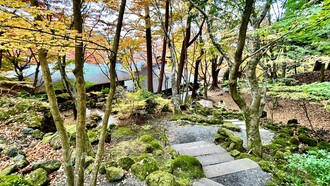In an era where sustainability and resource efficiency are at the forefront of architectural innovation, adaptive reuse has emerged as a compelling solution. This approach involves taking existing buildings and repurposing them for new functions, blending historical preservation with today's modern needs. Adaptive reuse not only conserves resources but also breathes new life into structures that might otherwise fall into disrepair. From large abandoned factories to beautiful defunct churches, adaptive reuse is reshaping urban landscapes and creating vibrant, functional spaces that honor the past while looking towards the future.
One of the most significant advantages of adaptive reuse is its environmental impact. Constructing new buildings consumes vast amounts of energy and materials, contributing to the depletion of natural resources and increased carbon emissions. By repurposing existing structures, architects and designers can significantly reduce the environmental footprint of construction projects. For example, converting an old warehouse into a residential complex or an office space can save on materials and energy that would otherwise be used in demolition and new construction. This approach aligns with the principles of sustainability and conservation, making adaptive reuse a vital component in architecture today. Another exciting aspect of adaptive reuse is its potential to create mixed-use developments that serve multiple purposes. Combining residential, commercial, and public spaces within a single building or complex can foster vibrant, dynamic communities.
Historic preservation is another critical aspect of adaptive reuse. Many old buildings possess unique architectural features and historical significance that are worth preserving. Instead of demolishing these structures, adaptive reuse allows architects to integrate their unique character into modern designs. This fusion of old and new can create visually stunning and culturally rich environments. A prominent example is the LX Factory in Lisbon, a former industrial complex transformed into a vibrant cultural and commercial hub. After years of abandonment, the complex was revitalized, becoming a creative and entrepreneurial center that preserves its industrial heritage while adapting to contemporary needs.
The revitalization of LX Factory involved repurposing the existing industrial buildings into a mix of offices, studios, shops, restaurants, and event spaces. The original architectural elements, such as exposed brick walls, large windows, and metal structures, were retained and integrated into the new design, creating a unique atmosphere that honors the site's history. This blend of old and new attracts a diverse crowd, from artists and entrepreneurs to tourists and locals, fostering a dynamic and creative community. These kinds of examples help us understand the potential of adaptive reuse to rejuvenate urban areas, stimulate local economies, and create sustainable environments. The approach of preserving the historical character of the buildings while introducing modern functionalities, serves as a model for how cities can effectively balance preservation with innovation, making the most of their architectural heritage.
Adaptive reuse brings considerable economic advantages by often being less expensive than new construction, particularly in densely populated urban areas. It revitalizes local economies by drawing in businesses, residents, and tourists to rejuvenated spaces, boosting job creation, and fostering community development. Adaptive reuse practices can help support the broader economic development of the area. It also addresses the issue of urban sprawl by making better use of existing infrastructure. Instead of expanding outward, cities can grow sustainably by revitalizing underutilized buildings and spaces within their current boundaries. By focusing on infill development, cities can become more sustainable and resilient, minimizing their environmental impact and enhancing the quality of life for residents.
The process of adaptive reuse often involves creative problem-solving and innovative design solutions. Architects must navigate the challenges of working with existing structures, which may include outdated building codes, structural issues, and limited space. However, these constraints can also inspire creativity, leading to unique and imaginative designs. For example, the adaptive reuse of the Zollverein Coal Mine Industrial Complex located in the city of Essen, North Rhine-Westphalia, in Germany has transformed a former industrial site into a cultural and educational center, preserving its industrial heritage while introducing contemporary architectural elements. Once the largest and most productive coal mine in Europe, Zollverein's extensive complex was a symbol of industrial might and economic strength.
Today, Zollverein is a UNESCO World Heritage Site and a thriving cultural and educational center. The Ruhr Museum, housed in the former coal washery, offers visitors an in-depth look at the region's industrial history and cultural evolution. One of the most striking aspects of Zollverein's adaptive reuse is the innovative design solutions employed to integrate new functionalities into the existing structures. This blend of old and new is evident in the careful restoration of original features, such as conveyor belts and steel structures, alongside contemporary additions like glass facades.
Despite its many benefits, adaptive reuse faces many challenges in today's world, including navigating complex regulatory frameworks and zoning laws that may not accommodate new uses for old structures. Securing funding can be difficult, as these projects often require substantial investment in restoration and modernization. Additionally, not all buildings are suitable for repurposing due to their condition or structural limitations. Balancing historical preservation with contemporary needs and community expectations can be a delicate process, requiring careful planning and stakeholder engagement. However, the growing interest in sustainable and resilient urban development has led to increased support for adaptive reuse initiatives. Governments and organizations are recognizing the value of preserving architectural heritage while adapting to contemporary needs, resulting in more incentives and resources for such projects.
In conclusion, adaptive reuse represents a forward-thinking approach to architecture that balances historical preservation with modern functionality. By repurposing old structures, we can create sustainable, economically viable, and culturally rich environments that honor the past while embracing the future. As cities around the world continue to grow and evolve, adaptive reuse will play a crucial role in shaping urban landscapes that are both resilient and vibrant. This innovative practice not only conserves resources and reduces environmental impact but also fosters a deeper connection to our shared history, enriching the urban experience for generations to come.














